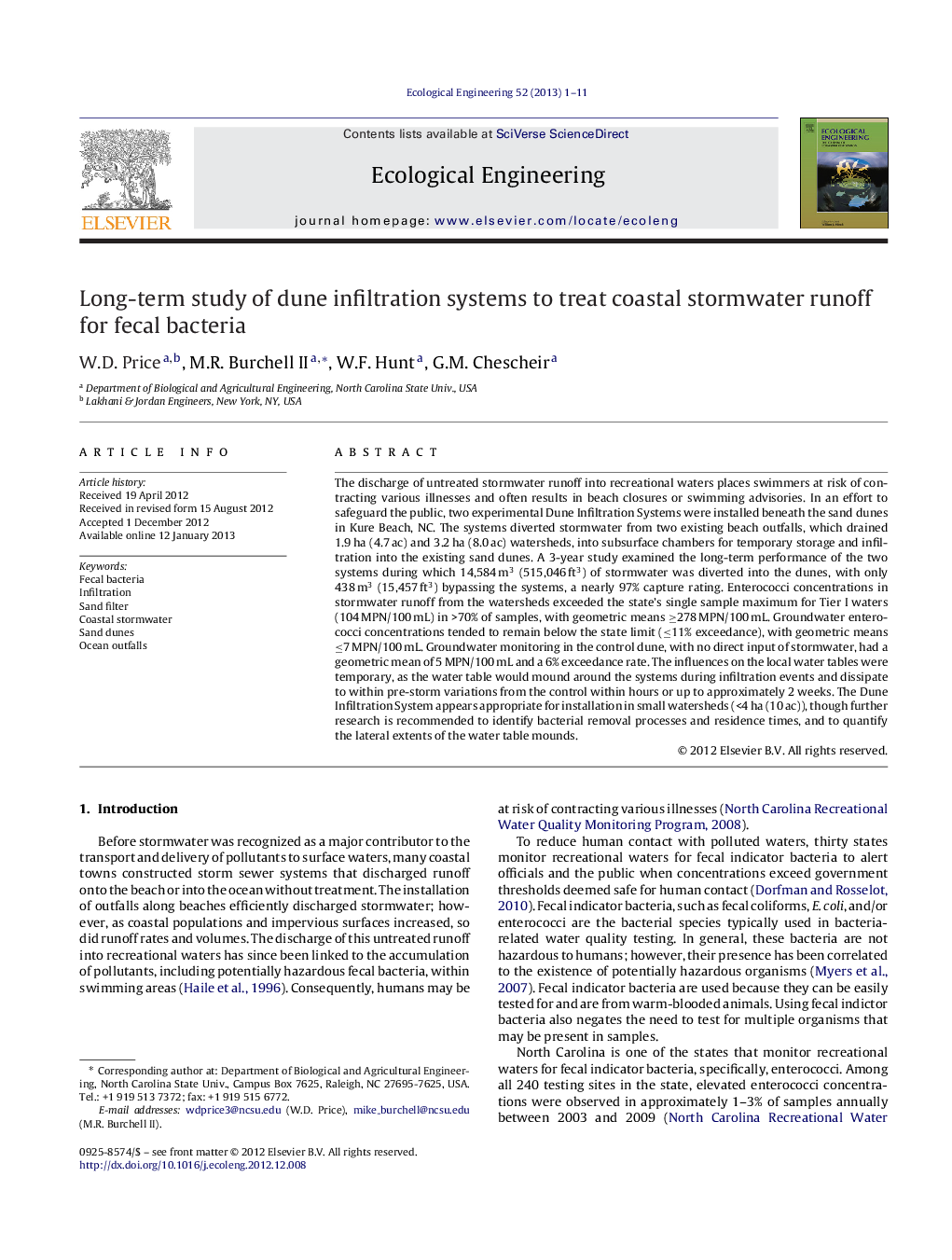| کد مقاله | کد نشریه | سال انتشار | مقاله انگلیسی | نسخه تمام متن |
|---|---|---|---|---|
| 4389730 | 1618046 | 2013 | 11 صفحه PDF | دانلود رایگان |

The discharge of untreated stormwater runoff into recreational waters places swimmers at risk of contracting various illnesses and often results in beach closures or swimming advisories. In an effort to safeguard the public, two experimental Dune Infiltration Systems were installed beneath the sand dunes in Kure Beach, NC. The systems diverted stormwater from two existing beach outfalls, which drained 1.9 ha (4.7 ac) and 3.2 ha (8.0 ac) watersheds, into subsurface chambers for temporary storage and infiltration into the existing sand dunes. A 3-year study examined the long-term performance of the two systems during which 14,584 m3 (515,046 ft3) of stormwater was diverted into the dunes, with only 438 m3 (15,457 ft3) bypassing the systems, a nearly 97% capture rating. Enterococci concentrations in stormwater runoff from the watersheds exceeded the state's single sample maximum for Tier I waters (104 MPN/100 mL) in >70% of samples, with geometric means ≥278 MPN/100 mL. Groundwater enterococci concentrations tended to remain below the state limit (≤11% exceedance), with geometric means ≤7 MPN/100 mL. Groundwater monitoring in the control dune, with no direct input of stormwater, had a geometric mean of 5 MPN/100 mL and a 6% exceedance rate. The influences on the local water tables were temporary, as the water table would mound around the systems during infiltration events and dissipate to within pre-storm variations from the control within hours or up to approximately 2 weeks. The Dune Infiltration System appears appropriate for installation in small watersheds (<4 ha (10 ac)), though further research is recommended to identify bacterial removal processes and residence times, and to quantify the lateral extents of the water table mounds.
► Two dune infiltration systems (DISs) captured a combined 97% of incoming stormwater.
► Temporary water table mounding lasted from a few hours up to approximately 2 weeks.
► ≥70% of inflow stormwater samples exceeded state enterococci allowable single-sample maximum concentration.
► ≤11% of groundwater samples exceeded state enterococci allowable single-sample maximum concentration following treatment with the DIS.
► No difference in enterococci concentrations at the dune/beach interface (23 m downslope of the DIS) between the study sites and control.
Journal: Ecological Engineering - Volume 52, March 2013, Pages 1–11